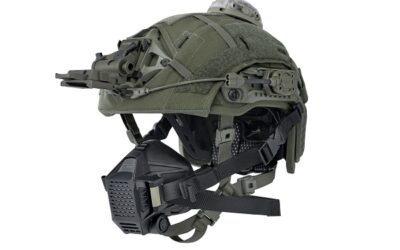Missile defence, unmanned systems, martime and air news
As a result of significant advances in its industry over the last decade, Turkey has transformed itself from a purchaser of weapons systems to a nation that develops and manufactures most of its own: the local content ratio has now reached the 70% level. Figures revealed by the Turkish Exporters’ Assembly (TIM) in May reveal sales of U$594.6 million in the first quarter, up by 17.24% on the same period in 2017. A further boost was provided by the lucrative contracts secured at the DIMDEX 2018 exhibition in Doha in March, during which Turkey’s leading defence and aerospace companies inked agreements totalling $800 million. Indications are that Turkey is moving rapidly towards a local content ratio of 80% and towards becoming a global player in the defence exports market.
The Enhanced Long Range Area Air and Missile Defence System (GUMS) programme was launched by the Undersecretariat for Defence Industries (SSM) in 2016 to meet the Turkish Air Force’s (TurAF) long-range air and missile defence requirement through an indigenous solution. Aselsan has been tasked as prime contractor to cooperate with Roketsan and Tübitak SAGE (Defence Industry R&D Institute) as the main local subcontractors. The indigenous system to be developed under the GUMS programme has been dubbed HISAR-U: it will be developed to have state-of-the-art military capabilities and will be designed to counter the most challenging threats. According to Aselsan officials, HISAR-U will be equipped with a Ka-band RF seeker and will be able to intercept incoming ballistic missiles at altitudes of over 30km and will have a hit-to-kill capability. It is slated to reach fruition by the mid-2020s.
EuroSam was selected as the technical support provider for GUMS. On 5 January, Aselsan and Roketsan signed an agreement with EuroSam to jointly conduct an 18-month definition study for, “preparing the development and production contract.” According to Undersecretary Ismail Demir, the advanced air and missile defence system to be defined under the study will be based on the EuroSam SAMP-T. This contract award follows a Heads of Agreement and an LoI signed by the Turkish, French and Italian defence ministries in July and November 2017, respectively. And on 15 January the Aselsan, Roketsan and Tübitak SAGE business partnership signed an agreement with SSM for the GUMS programme. Aselsan announced on 16 January that its workshare under the agreement amounted to TL869 million (€279.3 million) and that deliveries will be completed in 2021.
In late January and early February live fire tests were conducted under the HISAR Low and Medium Altitude Air Defence Missile Systems Programme at a firing range in Aksaray province. As prime contractor, Aselsan is responsible for the development of the radar, C2 and fire control systems, while main subcontractor Roketsan is responsible for the development of the HISAR-A (Low Altitude) and HISAR-O [Medium Altitude] missiles.
The Turkish MoND announced that Roketsan and Aselsan had successfully test fired the jointly-developed HISAR-A system on 1 February. In a statement, Minister of National Defence of Turkey Nurettin Canikli said, “The HISAR Project, which was developed using national facilities, provided 100% success in the tests.”
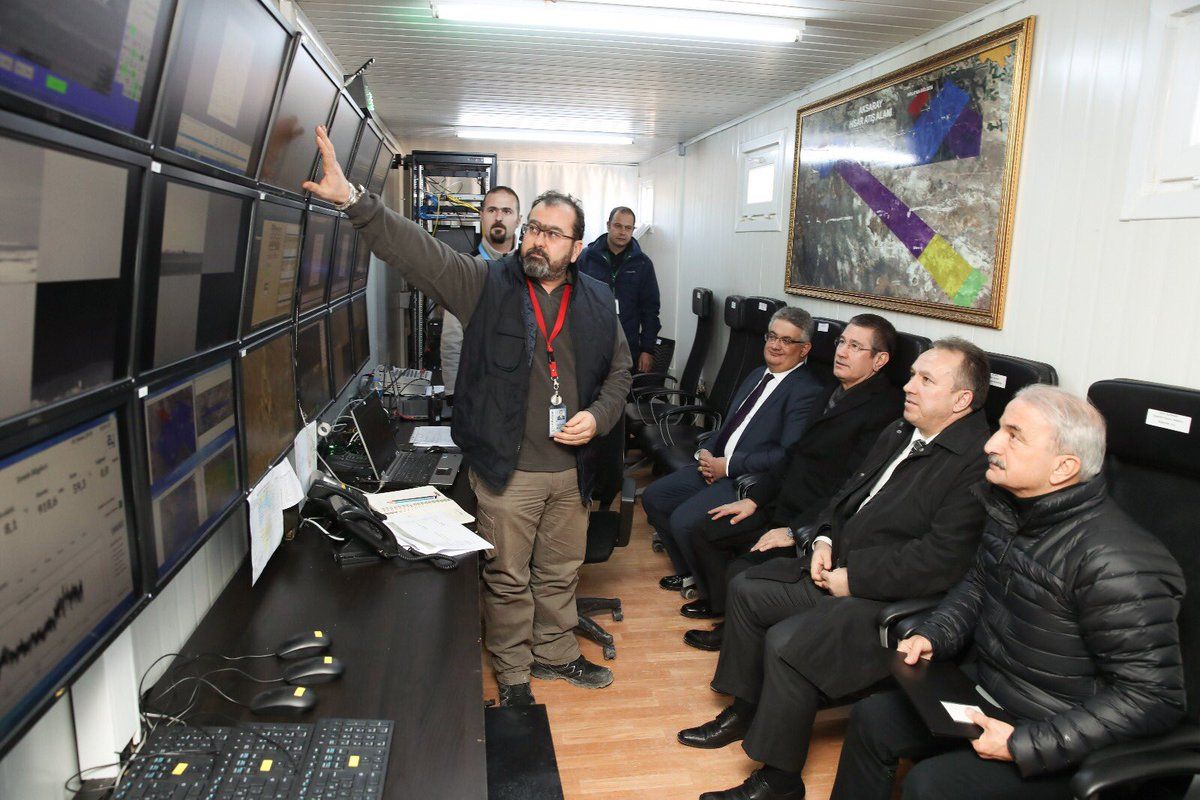
On 28 February, STM announced that it has secured a contract from the Pakistani MoD to perform the MLU for the Pakistani Navy’s second AGOSTA 90B-class submarine, the PNS/M SAAD. The upgrade is scheduled to begin in 2019. STM was selected by the MoD as prime contractor for the AGOSTA 90B Class Submarine Modernisation Project, covering three submarines, in June 2016, with the contract becoming effective on 23 September that year. Total value of the programme is expected to reach $350 million.
The first boat of the programme, PNS/M KHALID, is currently undergoing an MLU upgrade at PN Dockyard and is expected to be returned to the Pakistani Navy in 2020.
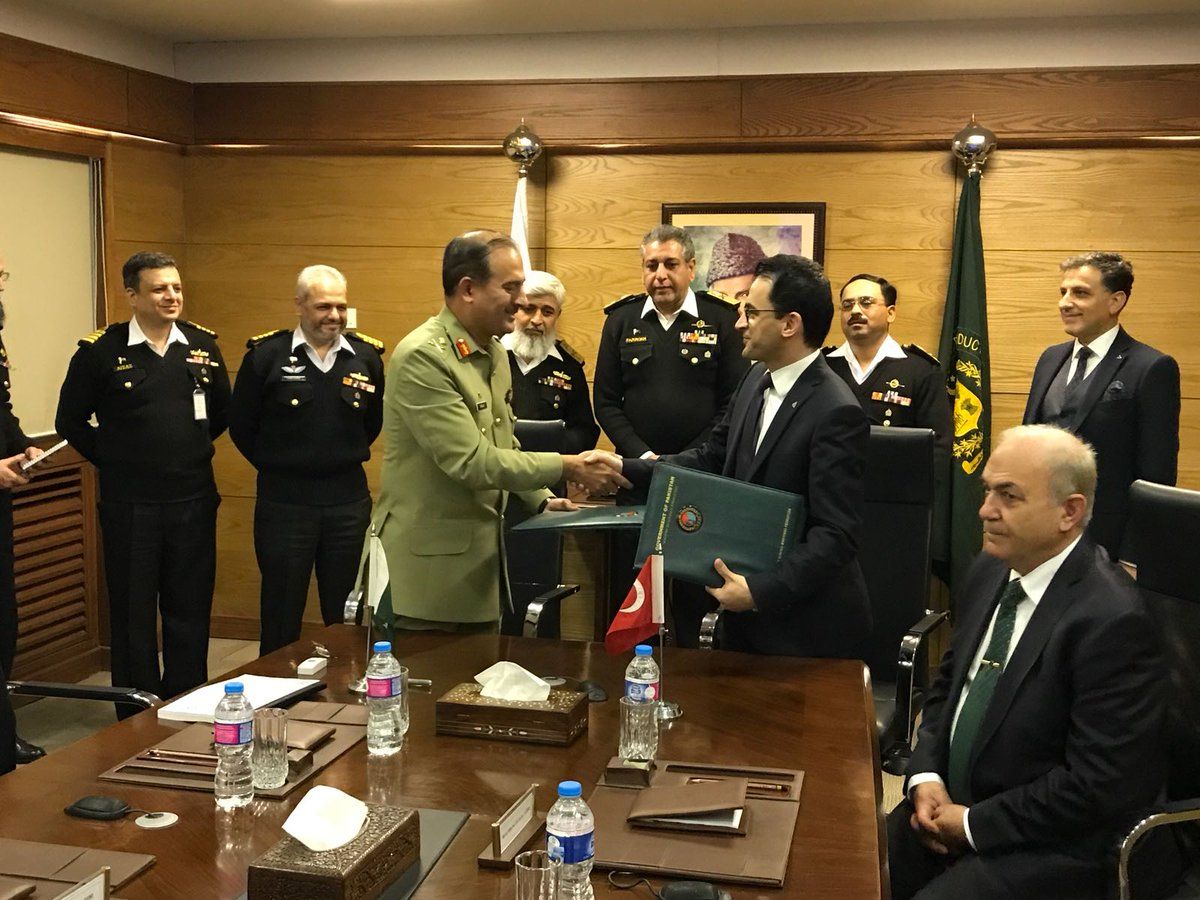
The Turkish Navy’s third ADA-class corvette, TCG BURGAZADA, set sail for first time on 18 March, for a series of in-port trials. As part of the trials, shipbuilder Istanbul Naval Shipyard and Turkish Navy officials will test the ship’s technical systems and equipment, including its propulsion system, manoeuvring behaviour and technical operations.
Under the MilGem (National Vessel) programme, four ADA-class wholly indigenous corvettes will be constructed at Istanbul Naval Shipyard to meet the navy’s specific requirements in terms of speed, sea-keeping and stability. Construction of the third and fourth vessels (BURGAZADA and KINALIADA) continues, with BURGAZADA having been launched in June 2016 and KINALIADA in July 2017. Provisional acceptances for both are scheduled to take place in September 2018 and in 2020 respectively. Final acceptance of these two ships will take place after a 12-moth guaranty period in September 2019 and in March 2021.
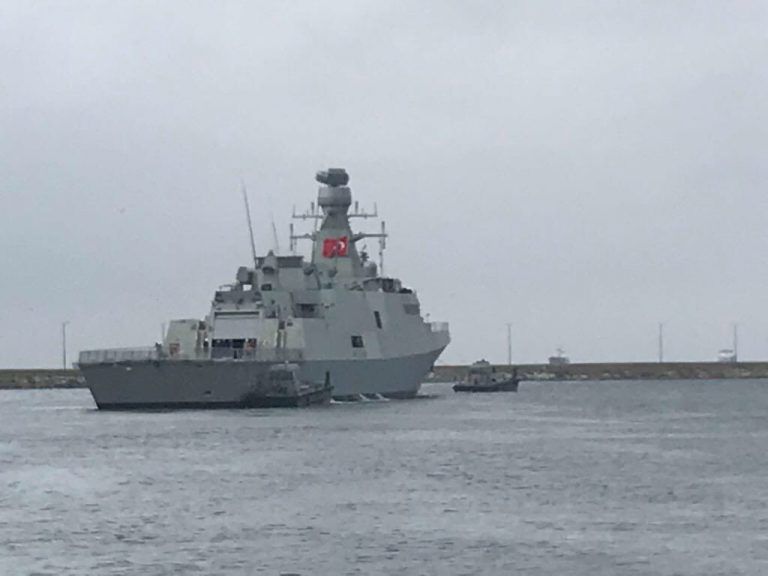
Ballistic flight tests of the indigenously developed GÖKDOGAN (PEREGRINE) short-medium range and BOZDOGAN (MERLIN) long range air-to-air missiles (AAM) from land based launchers were successfully carried out at the Sinop missile test range on 24-25 March . The Ballistic Test Missile versions of both missiles, without seeker and with self-destruction capability in case of emergency, were fired at their targets in the Black Sea.
Tübitak-SAGE also plans to test fire missiles at moving targets from stationary launchers and conduct a series of tests of air-launched missiles later this year.
Both missiles have been in development since 2012, under the GÖKTUG project led by Tübitak SAGE. Equipped with a high-resolution dual-colour Imaging Infra-Red (IIR) seeker, designed and developed by Tübitak-SAGE, with a comprehensive off-boresight capability, along with advanced counter-measures, GÖKDOGAN is a visual range AAM with a range of 25km approx. Equipped with Aselsan’s solid-state, single source Ku-band active RF seeker with a mechanical gimbal, BOZDOGAN is a Beyond Visual Range AAM that reaches to 65km and has an advanced counter-measure capability and data link update. GÖKDOGAN is equipped with TVC capability for superior manoeuvrability and off-boresight launch capability. Both missiles are powered by smokeless solid propellant rocket motors and will have an HE warhead with blast/fragmentation effect and a laser proximity fuse.
Turkish Aerospace’s (TAI) ANKA MALE UAV conducted its first flight with Tusas Engine Industries’ (TEI) PD-155 engine on 22 February. Developed and manufactured by TEI under the ANKA-S Engine Modification Project, the PD-155 engine generates 155hp and will be used as an interim solution until the PD-170 turbodiesel engine becomes operational. The PD-170 delivers 170hp but the engine architecture was designed to support up to 210. Under the contact signed between TEI and TAI on 31 October 2014, TEI will deliver 2 prototypes and 10 series production PD-155 engines for the TurAF ANKA-S fleet.
On 2 February, SSM announced via Twitter that acceptance of the first ANKA-S UAV system has been completed successfully and the system handed over to the TurAF. Delivered on 1 February, the first ANKA-S MALE UAV system consists of two air vehicles, FLIR payloads, satcom capability and related ground systems. SSM underlined that the ANKA-S will be used for reconnaissance and surveillance missions and that, thanks to its satcom capability, up to six air vehicles can be controlled simultaneously via satellites. Initially this will be via TürkSat 4B [Ku-band] and then via TürkSat 6A [X-band] when it becomes operational in 2021. From images that appeared on SSM’s social media account, the first two ANKA-S are equipped with FLIR StarSAFIRE 380HLD FLIR payloads, rather than Aselsan’s CATS FLIR. According to SSM tweets issued on 16 March and 8 April, TAI has delivered a further four ANKA-S systems (each of two air vehicles) to the TurAF, bringing the total number of systems delivered to six.
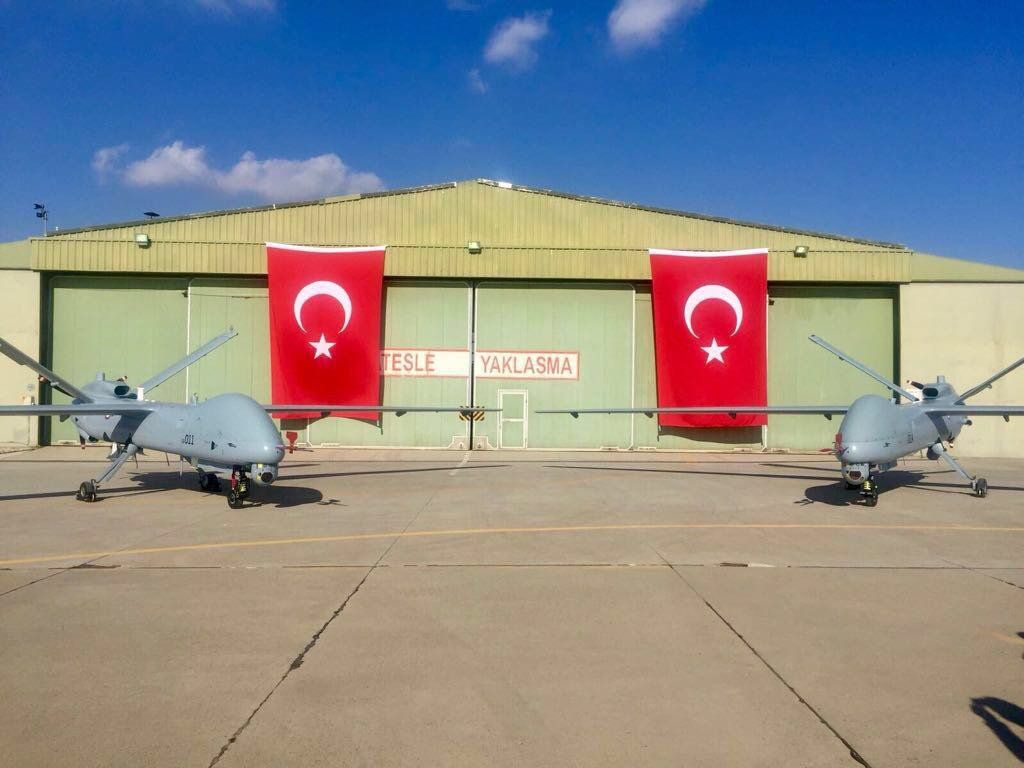
On 25 October 2013, SSM awarded TAI a $290 million to deliver three ANKA-S systems with 10 air vehicles in total (2+4+4) to meet TurAF requirements. Aselsan’s share (delivering 10 CATS FLIR payloads and some avionics including INS/GPS and radio systems) in this contract is valued at $33.6 million. Deliveries are expected to be completed in 2018.
On 1 April, SSM announced via Twitter that the ANKA Blok-B MALE UAV has entered service with Turkish Naval Forces Command (TNFC). According to sources at Dalaman Naval Airbase, the ANKA Block-B UAV is providing service to the TNFC under a lease contract, conducting its first operational flight over the Aegean on 27 March. Images on SSM’s social media sites show leased ANKA Block-B UAVs equipped with only Aselsan’s CATS FLIR payload. TNFC is planning to procure up to 12 ANKAs, either in Block-B or in Block-S configuration, to be equipped with a FLIR payload and Aselsan’s SARPE Synthetic Aperture Radar payloads, as well as a further 10 BAYRAKTAR TB2-S armed UAVs.
On 24 March, the SIGINT version of ANKA Block-B, dubbed ANKA-I, was revealed when two in-flight photographs of it were uploaded to social media sites by the SSM. Even though the agency has quickly deleted them, numerous users had by then already downloaded and saved the images. The ANKA-I, a heavily modified version of the Block-B, is equipped with ESM/ELINT and COMINT/DF systems (made by Aselsan and Ultra Electronics) for SIGINT missions. However, it lacks the satcom capability existing onboard the ANKA-S version. According to Turkish media, the first ANKA-I was handed over to the National Intelligence Agency, which came under the Turkish Presidency in late 2017, in April.
On 3 April, the Aselsan-Havelsan partnership signed an agreement with SSM to conduct an MLU for the BARBAROS-class frigates in Turkish Navy service. Four of the multipurpose frigates are currently operated, having entered service 1997-2000: TCG BARBAROS, ORUCREIS, SALIHREIS and KEMALREIS. Two of them were constructed by Blohm + Voss Shipyard in Hamburg and the remaining two at the Gölcük Naval Shipyard in Turkey, with technical support and material packages provided by Blohm + Voss.
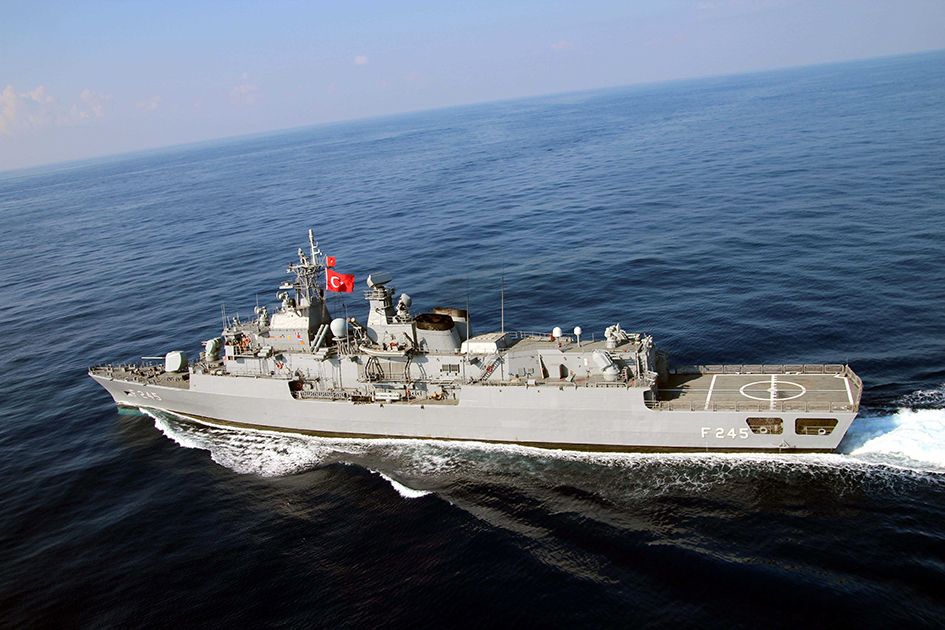
Aselsan has disclosed in a statement it sent to the Istanbul Stock Exchange that its share under the contract was worth €175.8 million. Under the contract the MLU for the first frigate is to be completed in November 2020 and the programme is scheduled to be completed by 2025. The existing Combat Management System (SACOS mod 3/TACTICOS) will replaced by a GENESIS-based national system(B-SYS). Also involved are new weapon/sensor systems and an indigenous 127mm gun fire control system will be integrated on the vessels.
The second vessel of the Landing Ship Tank (LST) programme, TCG SANCAKTAR, was handed over to TNFC during a ceremony held at the ADIK Shipyard in Tuzla, Istanbul on 7 April. There was a rumour that she was going to be sold to Saudi Arabia, which is why she was not delivered to TNFC until now. On 2 March, Turkish Defence Minister Canikli disclosed that there is a serious interest and orders from abroad for locally constructed corvettes and submarines and added: “Even, there is a country, who wishes to purchase a naval vessel that was constructed for the Turkish Navy, but we do not sell her, because we need it.” According to the original schedule, SANCAKTAR should have been delivered to TNFC in October 2017. Local content share in each vessel has reached over 70%.
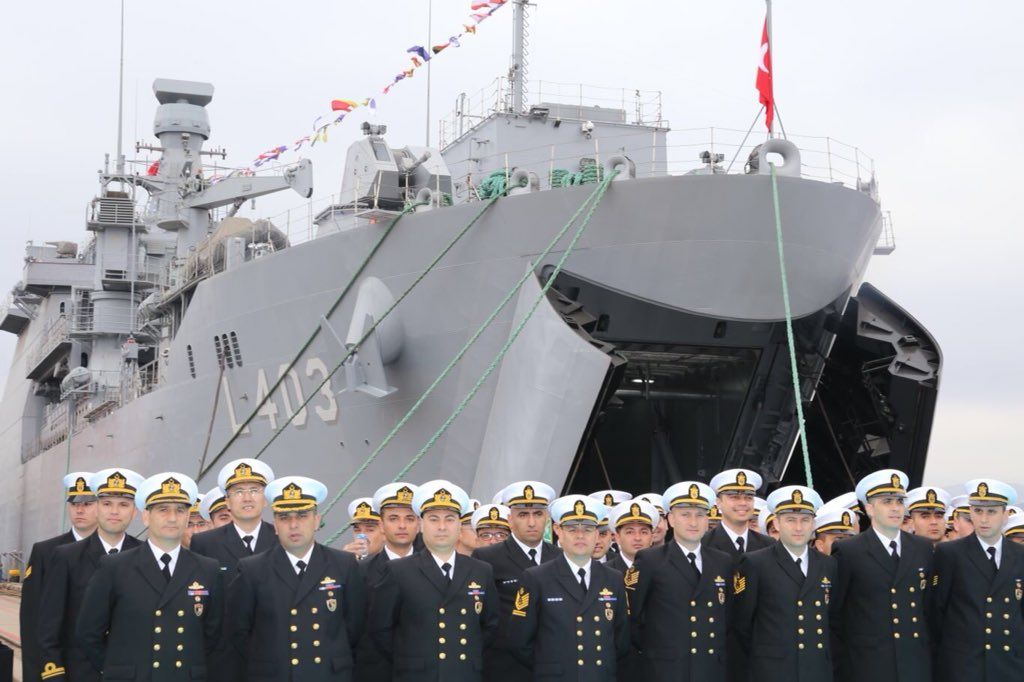
Aselsan completed factory acceptance tests (FAT) for the ÇAFRAD Active Electronically scanned Array (AESA) radar technology demonstrator prototype in early April. The company started the FAT processes in September 2017.
Under Phase I of the Multifunctional Phased Array Radar (ÇAFRAD) programme, a TL200 million ($79 million) contract was signed between SSM and Aselsan on 1 August 2013. Phase I covers the design, development, manufacture and testing of the ÇAFRAD prototype, to be composed of an X-band Multifunctional Phased Array Radar (ÇFR), X-Band Illumination Radar (AYR) and an IFF system with nonrotating AESA antenna.
According to the current schedule, on-going efforts to integrate the ÇAFRAD technology demonstrator prototype on a Turkish Navy GABYA-class frigate with RIM-162 ESSM capability, will be completed during the first half of 2018, after which live firing tests will be performed. In 2018 the test campaign will be completed and a series production contract will be awarded.
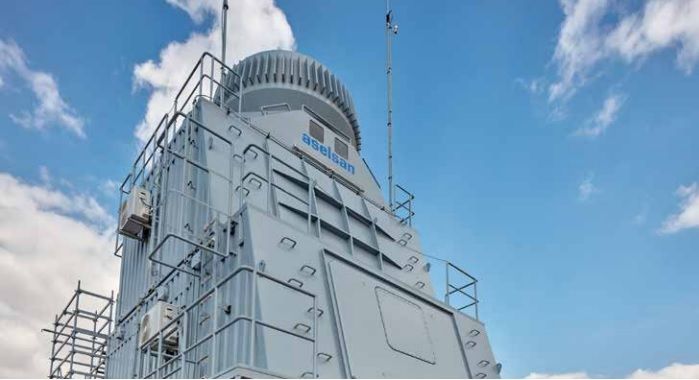
On 22 July, the Turkish government announced signature of the HürJet Project Protocol by TAI, the Undersecretariat for the Defence Industries (SSB) and TurAF command on 2 July. The programme has been developed considering the needs of both Turkish and global markets, and will receive strong support from both SSB and the TurAF.
A total of five HürJet prototypes will be manufactured in two different configurations: The Advanced Jet Trainer (AJT) and the Light Combat Aircraft (LCA). The latter variant will be integrated with a fire control radar, an external payload of up to 2,721kg on six external hardpoints, a fire control system and various mission systems. The HürJet AJT prototype is expected to conduct its maiden flight in 2022 and to enter TurAF service in 2025.
{source}
<!– You can place html anywhere within the source tags –>
<iframe width=”560″ height=”315″ src=”https://www.youtube.com/embed/zwHmJT2c0GM” frameborder=”0″ allow=”autoplay; encrypted-media” allowfullscreen></iframe>
<script language=”javascript” type=”text/javascript”> // You can place JavaScript like this
// You can place JavaScript like this
</script>
<?php // You can place PHP like this
// You can place PHP like this
?>
{/source}
As the T-129 ATAK helicopter video from #FIA18 was deleted for some reason, here it is again for your viewing pleasure:
{source}
<!– You can place html anywhere within the source tags –>
<iframe width=”560″ height=”315″ src=”https://www.youtube.com/embed/k3mrdjbMW6A” frameborder=”0″ allow=”autoplay; encrypted-media” allowfullscreen></iframe>
<script language=”javascript” type=”text/javascript”> // You can place JavaScript like this
// You can place JavaScript like this
</script>
<?php // You can place PHP like this
// You can place PHP like this
?>
{/source}
Kubilai Han is Mönch’s Turkish correspondent.



